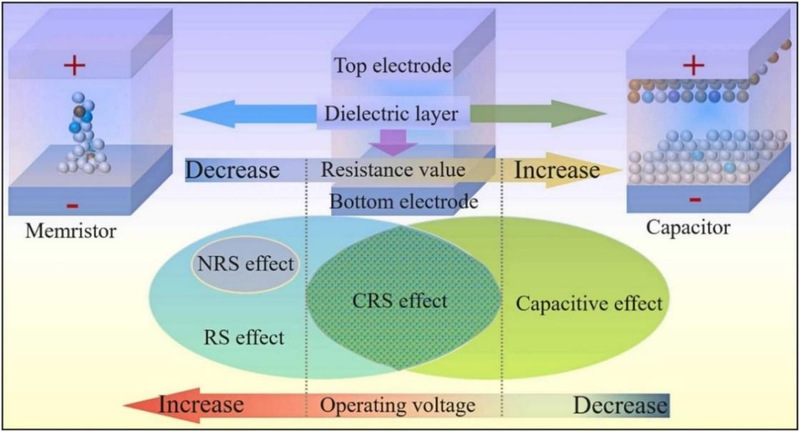Capacitive-coupled memristive effect provides a favorable way for developing a novel multifunctional device since it simultaneously exhibits capacitive behavior and resistive switching (RS) effect. Recently, Prof. Zhao Yong’s research group from College of Physics and Energy observed that the device exhibits the evolution between capacitive-coupled RS (CRS) effect and negative differential resistance (NDR)-coupled RS (NRS) effect by tuning the MnO2 thickness and applied voltage. Through in-depth mechanistic analysis, it was inferred that the evolution behaviors are attributed to the interaction of ions and electrons in the MnO2@TiO2 nanocomposite. With the dielectric capacity of the functional layer increases, the migration of ions and electrons is hindered, which impairs the formation of conductive filaments (CFs), causing a large number of electrons/ions to collect on the interfaces of the functional layer/electrodes, resulting in an internal electric field, thereby observing a macroscopic capacitive effect. Therefore, the work provides a deep understanding of the evolution between CRS and NRS effects, opening a new way for building ultra-low-power multifunctional devices for artificial intelligence applications.
The research, entitled “Evolution between CRS and NRS behaviors in MnO2@TiO2 nanocomposite based memristor for multi-factors-regulated memory applications”, was published in Nano Energy (IF= 19.069). FNU is the first organization of the paper, with Mao Shuangsuo, a doctoral student of College of Physics and Energy, as the first author, and Prof. Zhao Yong of FNU and Prof. Sun Bai of Xi’an Jiaotong University as the co-corresponding authors. The research was supported by the National Key Research and Development Program of China and Talent Project of FNU.
Paper link: https://doi.org/10.1016/j.nanoen.2022.108117

(Translated by Bai Yunfei/Reviewed by Xie Xiujuan)
